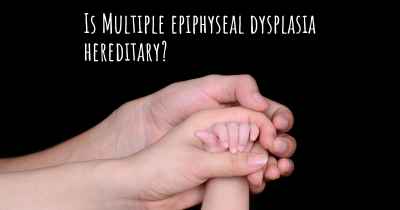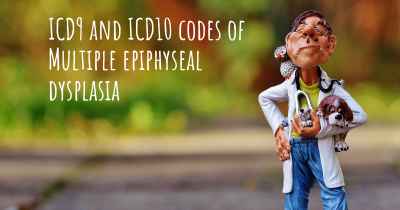What is the life expectancy of someone with Multiple epiphyseal dysplasia?
Life expectancy of people with Multiple epiphyseal dysplasia and recent progresses and researches in Multiple epiphyseal dysplasia

Multiple epiphyseal dysplasia (MED) is a genetic disorder that affects the development of the bones. It is characterized by abnormal growth of the cartilage in the joints, leading to joint pain, stiffness, and limited mobility. The severity of MED can vary widely among individuals, with some experiencing mild symptoms and others facing more significant challenges.
While MED can impact a person's quality of life and mobility, it does not typically affect life expectancy. With proper management, including physical therapy, pain management, and assistive devices, individuals with MED can lead fulfilling lives. Regular medical monitoring and early intervention for any complications that may arise are crucial.
It is important for individuals with MED to work closely with healthcare professionals to develop a personalized treatment plan and receive ongoing support.
Multiple epiphyseal dysplasia (MED) is a rare genetic disorder that affects the development of the bones, specifically the growth plates at the ends of long bones. It is characterized by abnormal cartilage and bone development, leading to various skeletal abnormalities. MED is a heterogeneous condition, meaning that its severity and progression can vary significantly from person to person.
The life expectancy of individuals with MED is generally normal and not significantly affected by the condition itself. MED primarily affects the skeletal system and does not typically impact other vital organs or bodily functions. Therefore, individuals with MED can lead fulfilling lives and have a similar life expectancy to the general population.
However, it is important to note that the impact of MED on an individual's quality of life can vary depending on the severity of the condition and the specific skeletal abnormalities present. Some individuals may experience more significant physical limitations and challenges, while others may have milder symptoms and fewer restrictions.
Treatment and management of MED primarily focus on addressing the symptoms and improving the individual's quality of life. This may involve a multidisciplinary approach, including orthopedic interventions, physical therapy, pain management, and assistive devices.
Orthopedic interventions may include surgical procedures to correct skeletal abnormalities, such as limb lengthening or joint realignment. Physical therapy plays a crucial role in maintaining joint mobility, muscle strength, and overall physical function. Pain management strategies, such as medication or alternative therapies, can help alleviate discomfort associated with MED.
Assistive devices, such as braces, crutches, or mobility aids, may be recommended to support mobility and reduce the risk of injury. These interventions aim to optimize the individual's physical abilities and enhance their overall well-being.
Prognosis for individuals with MED is generally favorable, with most individuals leading productive and fulfilling lives. The long-term outlook largely depends on the specific manifestations of the condition and the individual's ability to manage any associated symptoms or complications.
It is important for individuals with MED to receive regular medical follow-up and ongoing care to monitor their skeletal development and address any emerging issues promptly. Early intervention and appropriate management can help minimize potential complications and optimize outcomes.
Conclusion
Multiple epiphyseal dysplasia (MED) is a genetic disorder that primarily affects bone and cartilage development. While MED can cause skeletal abnormalities and physical limitations, it does not typically impact life expectancy. With appropriate treatment, management, and support, individuals with MED can lead fulfilling lives and have a normal life expectancy. Regular medical follow-up and multidisciplinary care are essential to optimize outcomes and address any emerging issues promptly.
Posted Mar 4, 2017 by Sarah 2000
Posted Mar 5, 2017 by Chloe_MED 820
Posted Nov 19, 2017 by Daniela Corrêa De 2500








